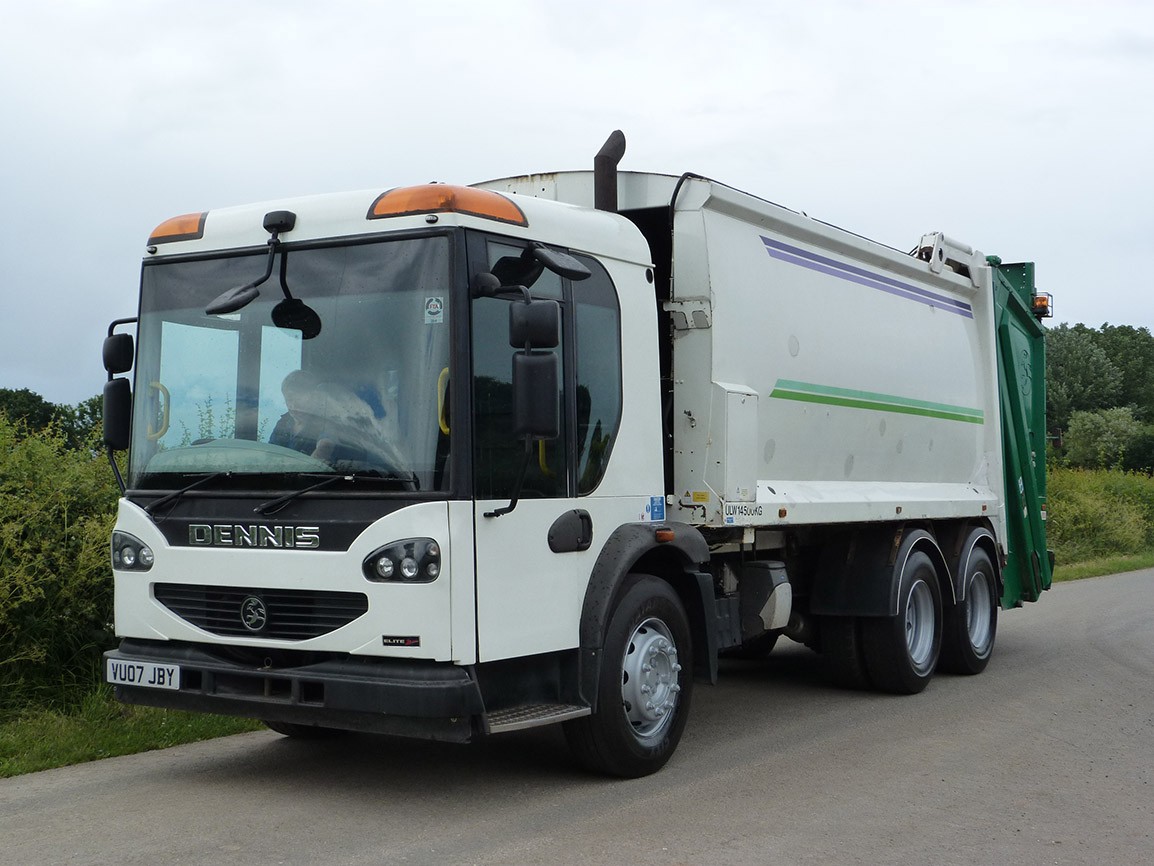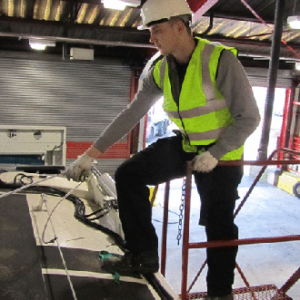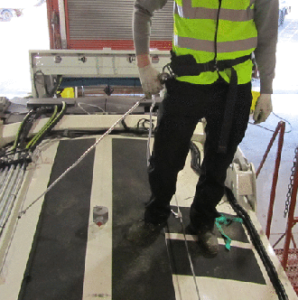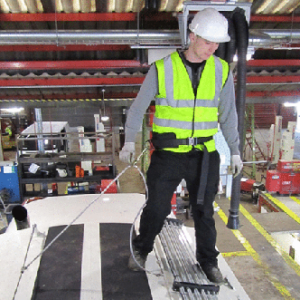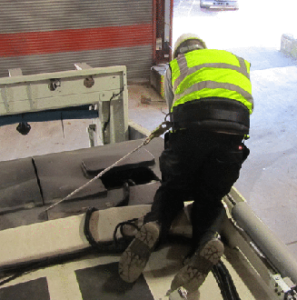REL
The Bi-LINE system has been installed on various refuse/garbage vehicles to provide secured access for operatives carrying out maintenance work on the vehicles roof mounted hydraulic and electrical equipment. The Bi-LINE installation generally comprises of a traveling Dual Lanyard attached to two restraint Lines, one located long each outside edge of the roof. The single Dual Lanyard is attached to the restraint lines via sliding Shuttles that allow the operative access to the full length and width of the vehicle.
The operative wears a comfortable padded Bi-LINE Work Positioning Belt with a simple snap fix buckle and friction adjusted webbing strap. The ‘stowed’ lanyard location is identified by and access sticker on the side of the vehicle. The operative would locate the access ladder / platform adjacent to this sticker. At waist height to the vehicle roof, the operative can reach the lanyard and release it from the stowage anchor. The Lanyard is then used as a third point of contact and restraint so the operative can pull themselves onto the roof. In the middle of the Lanyard is a Safety Swivel Hook trapped between two Stoppers, the hook is immediately connected to a sliding D Shackle on the operatives belt. The operative is now secured but has both free.
Once connected, the operative has hands free access to all of the main body, the lanyard simply slides along the restraint line as the operative progresses along the roof area. In the majority of cases the lanyard provides access to the whole roof area, however on some vehicles require a second fixed lanyard that provides access to the hopper hydraulics and electrics. The length of the lanyard from its attachment to the restraint line to the hook is less than the width of the vehicle preventing falls from the sides. Stoppers fitted to the restraint lines limit the access at the end of the vehicle.
FEL
The Bi-LINE system has been installed on various refuse/garbage vehicles to provide secured access for operatives carrying out maintenance work on the vehicles roof mounted hydraulic and electrical equipment. The Bi-LINE installation generally comprises of a traveling Dual Lanyard attached to two restraint Lines, one located long each outside edge of the roof. The single Dual Lanyard is attached to the restraint lines via sliding Shuttles that allow the operative access to the full length and width of the vehicle.
Front end loaders generally require a Bi-LINE installation on the main tub of the vehicle and a second lanyard or Bi-LINE assembly to the lid over the compactor.
The operative wears a comfortable padded Bi-LINE Work Positioning Belt with a simple snap fix buckle and friction adjusted webbing strap. The ‘stowed’ lanyard location is identified by and access sticker on the side of the vehicle. The operative would locate the access ladder / platform adjacent to this sticker. At waist height to the vehicle roof, the operative can reach the lanyard and release it from the stowage anchor. The Lanyard is then used as a third point of contact and restraint so the operative can pull themselves onto the roof. In the middle of the Lanyard is a Safety Swivel Hook trapped between two Stoppers, the hook is immediately connected to a sliding D Shackle on the operatives belt. The operative is now secured but has both free.
Once connected, the operative has hands free access and can easily change connection between the main body system and the compactor lid system. Both systems provide access to the whole roof of the vehicle, the lanyard simply slides along the restraint line as the operative progresses along the roof area. The length of the lanyard from its attachment to the restraint line to the hook is less than the width of the vehicle preventing falls from the sides. Stoppers fitted to the restraint lines limit the the travel of the lanyard and access at the end of the vehicle.

